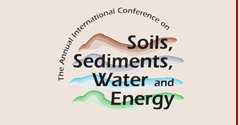Abstract
Aromatic hydrocarbons (BTX-s) are found very often in municipal sewage. The influence of BTX-s on biological processes efficiency, including the impact on nutrients removal, are presented. The BTX’s concentrations are varying in the range of 0 to 933 µg/L. Toluene is the compound most often measured in raw sewage. The concentration of toluene in the digested sludge liquor from primary settling tanks could increase to a level of 42 000 µg/L. Other aromatic hydrocarbons are observed in lower concentrations of about 30 µg/L. All of the investigated aromatic hydrocarbons have a more or less negative effect on the treatment. The effects have been evaluated in laboratory experiments for synthetic and real sewage. BTX-s have been added in concentrations in the range from 250 to 1250 µg/L. The biological treatment processes of municipal and synthetic sewage were performed in anaerobic and aerobic conditions. After the first step of treatment (anaerobic) the concentrations of BTX-s have decreased from 45 % for benzene to 76 % for p-xylene. A part of BTX-s was adsorbed on activated sludge. The aerobic stage permitted an almost complete BTX’s removal. The presence of aromatic hydrocarbons resulted in decrease of the effects of COD, nitrification and total phosphorus removal. The treated sewage contained higher concentrations of TKN in the range of 10 to 55 mg/L.
Recommended Citation
Mrowiec, Bozena and Suschka, Jan
(2010)
"Presence And Effects Of Aromatic Hydrocarbons On Sewage Treatment Efficiency,"
Proceedings of the Annual International Conference on Soils, Sediments, Water and Energy: Vol. 14, Article 20.
Available at:
https://scholarworks.umass.edu/soilsproceedings/vol14/iss1/20
